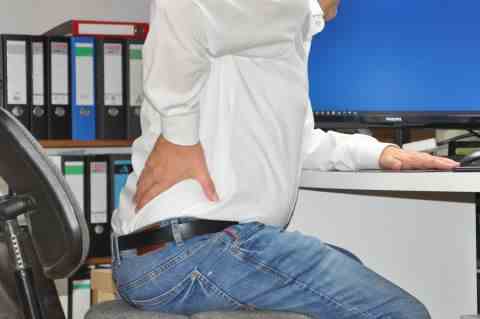October 19, 2022
If a therapy for chronic back pain specifically addresses the personal needs of the patient, the chances of success are significantly greater than with standard treatments. If a psychotherapeutic procedure is added, cognitive behavioral therapy, the pain can be alleviated even more effectively. This was the result of a meta-study by the Goethe University in Frankfurt. From this it can be concluded that multimodal therapies should be promoted more strongly in the German health care system in accordance with the specifications of the National Health Care Guideline.
Lack of exercise, incorrect strain, overload, permanent stress at work or privately – there are many causes for the common disease back pain. In quite a few of those affected, the symptoms are even chronic. That is, they last for a long time or keep coming back. Guided sports and exercise therapies can bring relief. Common treatment methods include physical therapy, strength training and stabilization training. But how can the therapy be as successful as possible? What is the most effective way to relieve pain? A meta-study by the Goethe University in Frankfurt recently published in the Journal of Pain has brought new insights into this.
58 randomized controlled trials (RCTs) of more than 10,000 patients worldwide who suffer from chronic pain in the lower back area served as the database. First, the data relevant to the topic were filtered out of the original manuscripts and then evaluated in a summarized form. On the one hand, the evaluations were about whether and how much standard treatments and personalized treatments differ from each other in the result. Personalized means there is a kind of personal coaching in which therapists specifically address the potential and needs of the patient and decide together with them what the therapy will look like.
Pain Relief: Personalized treatment has stronger effects than standard treatment
The result of the study: Personalized treatment led to a significant increase in the effects of chronic back pain compared to standard exercise therapies. The success rate for pain relief was 38 percent higher than standard treatment. “The greater effort involved in personalization is worth it, since the patients benefit from it to a clinically relevant extent,” says the lead author, Associate Professor Dr. Johannes Fleckenstein from the Institute for Sports Sciences at the Goethe University in Frankfurt.
Personalized treatment plus cognitive behavioral therapy had the greatest impact
But the study went further. In addition to the standard treatments and the personalized ones, the Frankfurt research team compared a third group of treatments. In these, personalized training units were combined with what is known as cognitive behavioral therapy (CBT). This interview process assumes that negative thoughts and behaviors related to the topic of pain have a pain-intensifying effect. So pain patients learn to change the way they deal with the pain. They reduce fear of movement or are taught tactics for coping with pain. This makes them realize that they are by no means helpless. But what does psychotherapeutic support through CBT actually contribute to the success of the treatment? Here’s what the data analysis revealed: When the personalized approach and CBT were combined, the success rate in terms of pain relief was an impressive 84 percent higher than with standard care. The combined therapy, also known as multimodal therapy, led to the best result by far.
Strengthen multimodal therapy offers
Fleckenstein sees in the study “the urgent health policy appeal” to strengthen combined offers in care and remuneration. “Compared to other countries, such as the USA, we are in a relatively good position in Germany. For example, we have fewer prescriptions for strong narcotics such as opiates. But the rate of unnecessary X-ray examinations, which can also contribute to the chronification of pain , or inaccurate surgical indications is still very high.” According to Fleckenstein, this is also due to the economic incentives, i.e. the relatively high remuneration for such measures. The situation is different in pain therapy facilities. According to Fleckenstein, they are not in deficit, but they are not a cash cow for investors either. The aim here is to improve the economic framework conditions. Because: In the long term, pain therapy saves a lot of money from a health economics point of view, whereas pills and operations rarely lead to medium and long-term pain relief.

